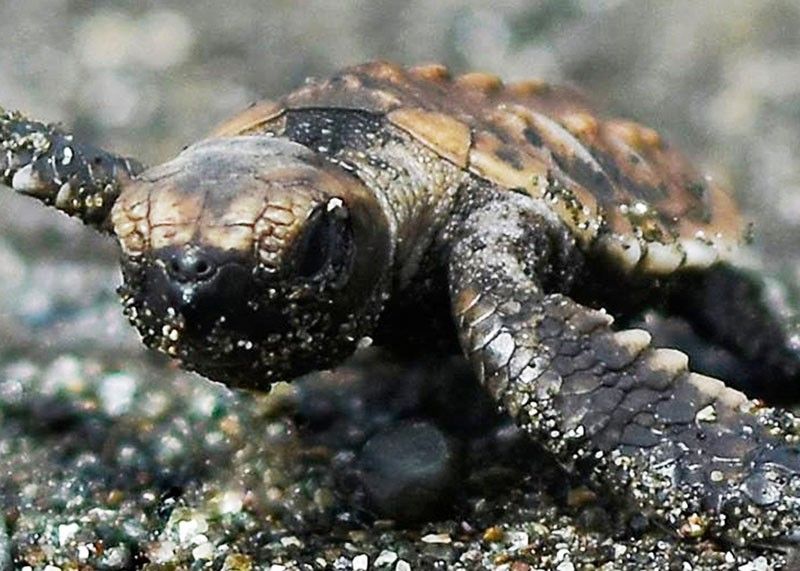Magsaysay town fights for sea turtles’ survival

MAGSAYSAY, Misamis Oriental , Philippines — A study by the Australian Academy of Science indicates the world is heating up, and the increasing concentrations of greenhouse gases, such as CO2, in the Earth’s atmosphere are causing the planet’s climate system to retain more energy, affecting plants and species.
“The average temperature of the Earth’s surface increased by an estimated 0.7°C since the beginning of the 20th century and, according to the most recent projections of the Intergovernmental Panel on Climate Change, could rise by 1.6–4.3°C compared to an 1850–1900 baseline by 2100,” it said.
This condition is taking a toll on Magsaysay town’s precious but endangered species – the hawksbill turtles.
Magsaysay local government officials are making do with whatever they can to preserve the hawksbill turtles found nesting on its beaches.
Kandiis Kagawad Rolando Pagara, who has been monitoring sea turtles for 20 years now, said they have already tagged with the Department of Environment and Natural Resources various hawksbill turtles, some of whom were treated for injuries until three Magsaysay villages – Kandiis, Damayuhan and San Isidro – were declared as Wildlife Critical Habitat through Administrative Order 2016-2.
In the so-called “Gateway to Misamis Oriental,” provincial and municipal officials struggle against a rise in sea level temperature due to climate change, which impacts on sea turtles nesting on its beaches.
“This is because sea turtles use both marine and terrestrial habitats during their life cycles,” explained Pagara, also the focal person for Task Force Pawikan, created by the Magsaysay municipal government to preserve the sea turtles.
Pagara said they have also rescued sea turtles that were tagged by Malaysia.
He said it has been the custom for hawksbill turtles to come back to their places of origin, where they were nestled and once lived. Known for surviving up to 100 years, these turtles have been coming back to the shores of Magsaysay’s coastal villages long after they left.
“This is the reason why they are now nesting under houses, because these areas were their nesting places a long time ago when there were no people living there yet,” Pagara said.
He said soon the sea turtles may be extinct because the heating up of the atmosphere makes them produce female-only eggs, with only one to 10 percent survival rate.
- Latest




























